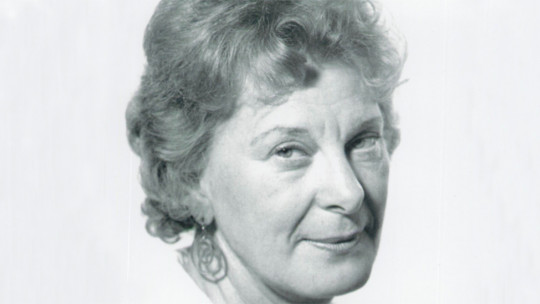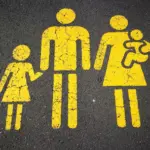Structural family therapy emerged in order to resolve the functioning and communication problems presented by some unstructured families with whom Salvador Minuchin worked.
This intervention model tries to solve the problems of some people, from an approach that focuses on the factors of family functioning that favor its maintenance.
In this article the bases and operation of structural family therapy will be briefly explained. which is part of the systemic family therapy models.
What is Structural Family Therapy?
This model of family therapy began to be applied by Minuchin during his first stage living in New York, when he worked in an institution with young people who had committed crimes and whose families were broken.
Also during his time residing in Philadelphia he continued working with unstructured and low-income families, applying his family therapy approach and that is when he began to collaborate with Jay Hayley, one of the precursors of strategic therapy; which is why his approach has common concepts with structural family therapy.
Structural family therapy has as its main objective to resolve the problems that prevent the proper functioning of a family. To do this, the therapist seeks to promote a structural change in the family system, so that all its members together can respond in a functional and adaptive manner to the demands of the stage of the life cycle they are going through.
The structure of the family seen from this systemic approach
The family structure is made up of the group of interrelation patterns between family members. and to analyze this structure, the following patterns are analyzed: coalitions, alliances, subsystems and limits.
1. Subsystem
A subsystem consists of the union of two or more family members who are closer due to some special characteristic that maintains that union (e.g. family members who love sports and practice it together).
2. Alliance
an alliance involves closeness between two or more people in the family organizing a subsystem with a positive objective (e.g., the father and mother of the family help each other in order to pull the wagon so that their children do not lack anything).
3. Coalition
a coalition occurs when two family members, or even more, join together, turning against a third member (e.g., when the eldest argues with the middle sister, the little sister usually takes the middle sister’s side).
When it involves a coalition between family members who belong to a different generation, it is called a “perverse triangle” (e.g., the eldest son always takes his mother’s side when he is in an argument with his father).
4. Limits
Limits They comprise the group of rules that are responsible for regulating which members can be part of a family subsystem and what role they should play in that case.
There are three kinds of boundaries that can exist within the family structure.
First of all, the “fuzzy limits” which are those that allow all members to share most of the information, that is, they tell each other everything and they all have the right to be aware of everything that concerns the other members of the family.
Another way to set limits in the family is with “rigid limits.” ”, in which case members share little information with each other and, in which case, family members barely rely on each other emotionally.
Finally, there would be the “clear limits” , which will comprise a midpoint between the other two types of limits. In this case there is a fluid exchange of information but without going overboard, so that the freedom of the members is respected and emotional support is provided to whoever needs it when necessary.
Power distribution
From structural family and strategic therapy, there is a vision that The family must have clearly established who should be in charge of various tasks so that the family system can function correctly.
In this case, the vision of structural therapy is very normative, since they postulate that there must be a subsystem formed by the parents that must be very cohesive and in charge of making decisions about the various aspects of the organization of the family to put functional patterns in their interrelationships.
Besides, Children, as they grow, must gain a certain authority with respect to the younger ones. (e.g., the older child must take care of the younger child when the parents are working on the weekend).
- Related article: “The 12 types of authority (in the family and in society)”
Dysfunctional family
From the family structural approach, a dysfunctional family is known as one whose structure does not adapt to changes and which also does not allow its members to show support for each other nor the independence that each one needs.
These problems usually occur, on the one hand, in families with “fuzzy boundaries”, which are too close together and do not allow each of their members to have a small plot of privacy and independence; On the other hand, in families with “rigid limits”, which are disintegrated, and in which case the members find little emotional support from the rest of the members and there is hardly any communication between them.
Therefore, this type of family would have greater difficulties adapting to changes and crises that could arise for different reasons.
Dysfunctionality in the family can also be caused by some “intergenerational coalition or perverse triangle” between its members. because they distort the hierarchical power structure within the family (e.g., when the young child allies with his grandmother against his mother)
“Triangulation” is another dysfunctional family pathology which usually occurs when two family members, each on their own, seek to get a third party to ally themselves with them and turn against the other (e.g., in the case of divorced parents, when one parent tries of your child being your ally, against your other parent;
As we can see, when in a family system there is an unstable hierarchy and a poorly established distribution of responsibilities, the result is usually that of a dysfunctional family.

- You may be interested: “Toxic families: 4 ways they cause mental disorders”
Therapeutic process of this family therapy model
In structural family therapy the therapist is very “directive” so that he is in charge of ordering what the family members must do and is also very “active”, so he is in charge of developing situations of change for the family.
Structural family therapy is made up of three phases that will be discussed in this section.
1. Union and accommodation
The first phase is known as “joining” or union and accommodation, and It consists of seeking a good relationship with the family with whom you are going to deal. To achieve this objective, the psychologist talks with each of its members in order to understand the different points of view and also to develop a climate in which they feel that they can trust him.
2. Evaluation of the structure of the family system
The second phase deals with the evaluation of the family structure and is carried out through two methods.
The first method would be “direct exploration”, using questions that seek to understand the moment of the life cycle in which the family is and to what extent it could pose a problem ; It also seeks to gather information about the parents’ families of origin, alliances, boundaries and family hierarchy.
The second method is the “observation of interactions” between family members. It is used by the therapist from an impartial position in order to analyze the interactions that arise spontaneously in therapy between family members and even, on occasions, it brings to light conflictive topics in order to know the way in which its members behave in those types of contexts.
- Related article: “What does a psychological evaluation consist of?”
3. Intervention
In this phase, the change plans are carried out through different techniques that will be detailed below.
3.1 Boundary drawing
This technique is used in order to set limits on a subsystem that is preventing a member of the family from communicating. (e.g., the therapist asking a parent to let his or her child express his or her point of view) and may also prevent some members from speaking on behalf of others, allowing everyone to express their opinion.
3.2. Work with hierarchy
It is used in order to mark limits between some subsystems and thus prevent any other member from interfering so that one subsystem can acquire the responsibility that corresponds to it with respect to the rest (e.g., reinstating the fact that children must respect the responsibility and authority that parents must have with respect to them).
3.3. Working with problem sequences
One of the main functions of this technique is that the family learns that it has other, more adaptive alternatives for functioning than those that are causing problems among its members.
3.4. Work with beliefs
It is a technique that the therapist uses in order to change the negative views of family members with more optimistic ones.
- You may be interested: “Cognitive restructuring: what is this therapeutic strategy like?”
3.5. Using language to facilitate change
This tool is very powerful for the therapist, since it helps him at certain times to achieve changes in the family system (e.g., changing his tone of voice in certain situations in order to enhance the emotions of family members ).
Psychologists who use the family structural model start from a positive vision of the family. so they have the idea that all families have alternative modes of action that would help resolve the problem and, its search and subsequent development within the family, is the objective of structural family therapy.









